Abstract
Cutaneous cell-mediated immunity (CMI) evoked by dinitrochlorobenzene (DNCB) was evaluated in end-stage renal disease patients on regular haemodialysis and before renal transplantation. Twenty-seven per cent of the patients had suppression of cutaneous CMI as shown by a negative response upon DNCB challenge. We analysed seven factors known or postulated to have an influence on renal allograft rejection for their effects on cutaneous CMI. Age, sex, red blood cell groups, pathogenesis of the underlying kidney disease, and HLA-DRw6 status had no direct effect on the DNCB response. The number of blood transfusions and the duration of haemodialysis were related to a decrease of the DNCB response but were at the same time correlated. By multiple regression analysis it was shown that the number of blood transfusions had a major suppressive effect on the DNCB response, whereas the duration of haemodialysis had a minor suppressive effect if any. Thus the cutaneous CMI evoked by DNCB partly reflects a general CMI response involved in allograft rejection as well. At the same time the effect of blood transfusion on cutaneous CMI restricts the application of the DNCB test for prediction of future renal allograft rejection.
Full text
PDF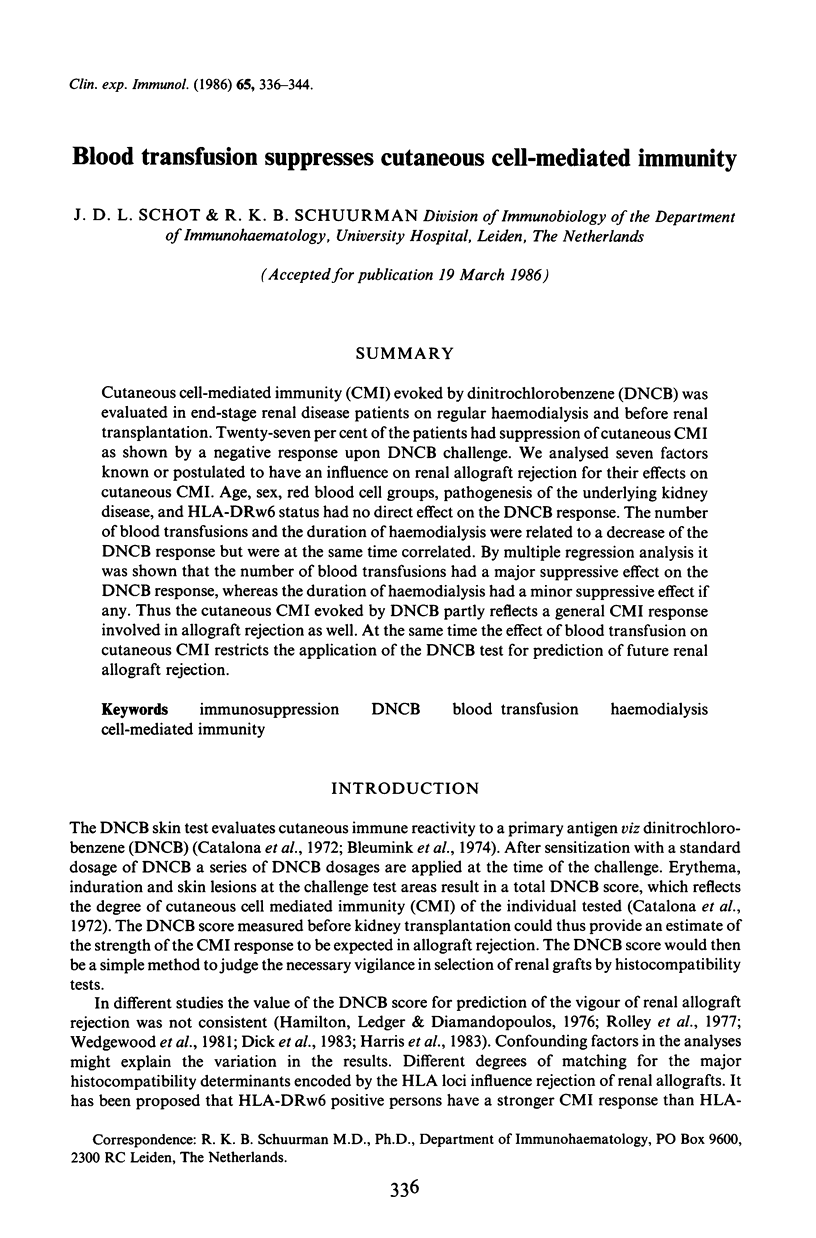
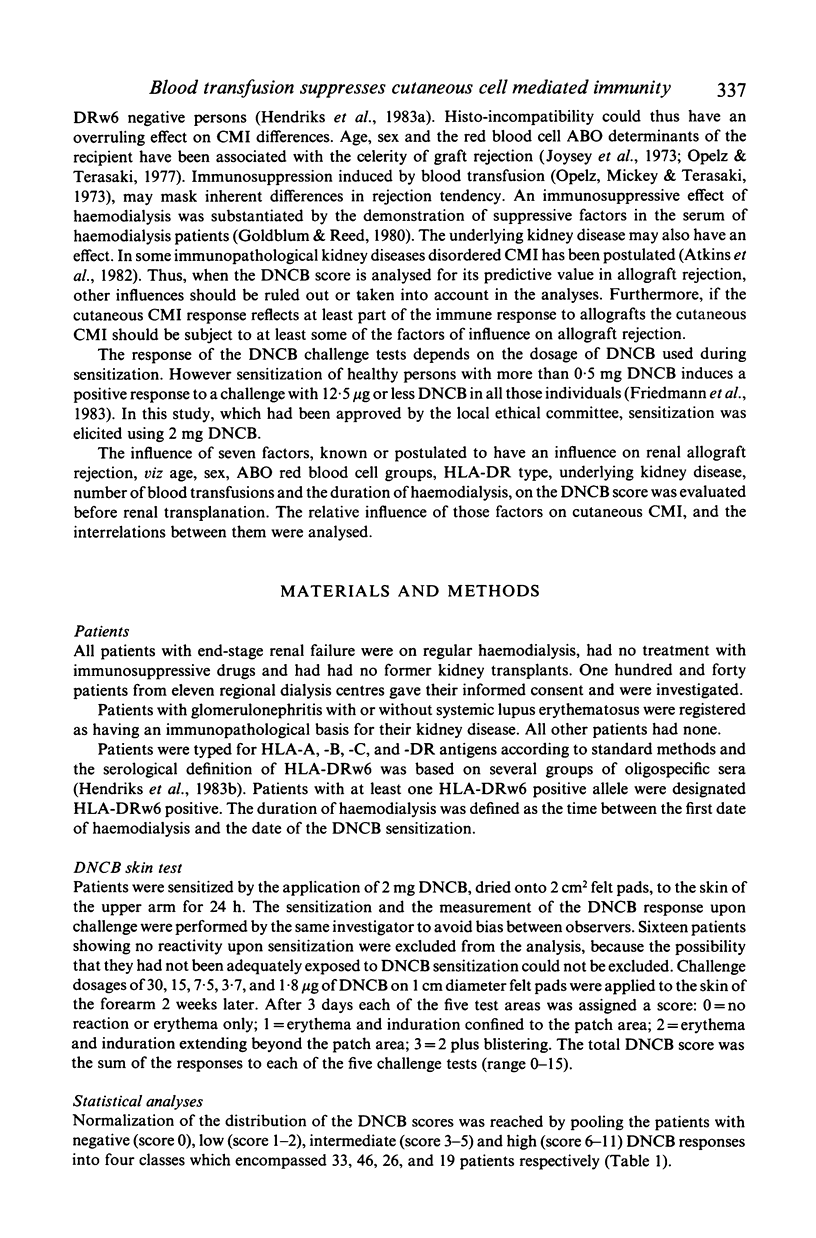
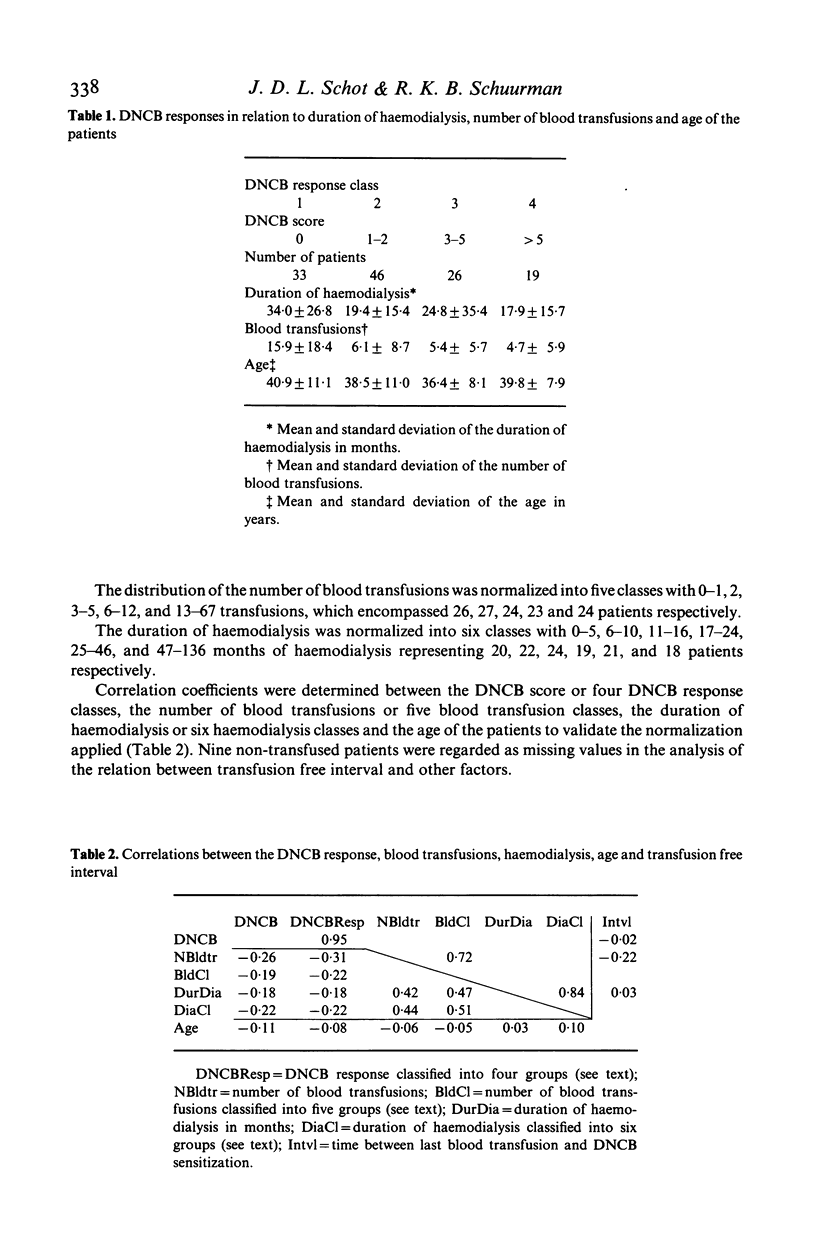
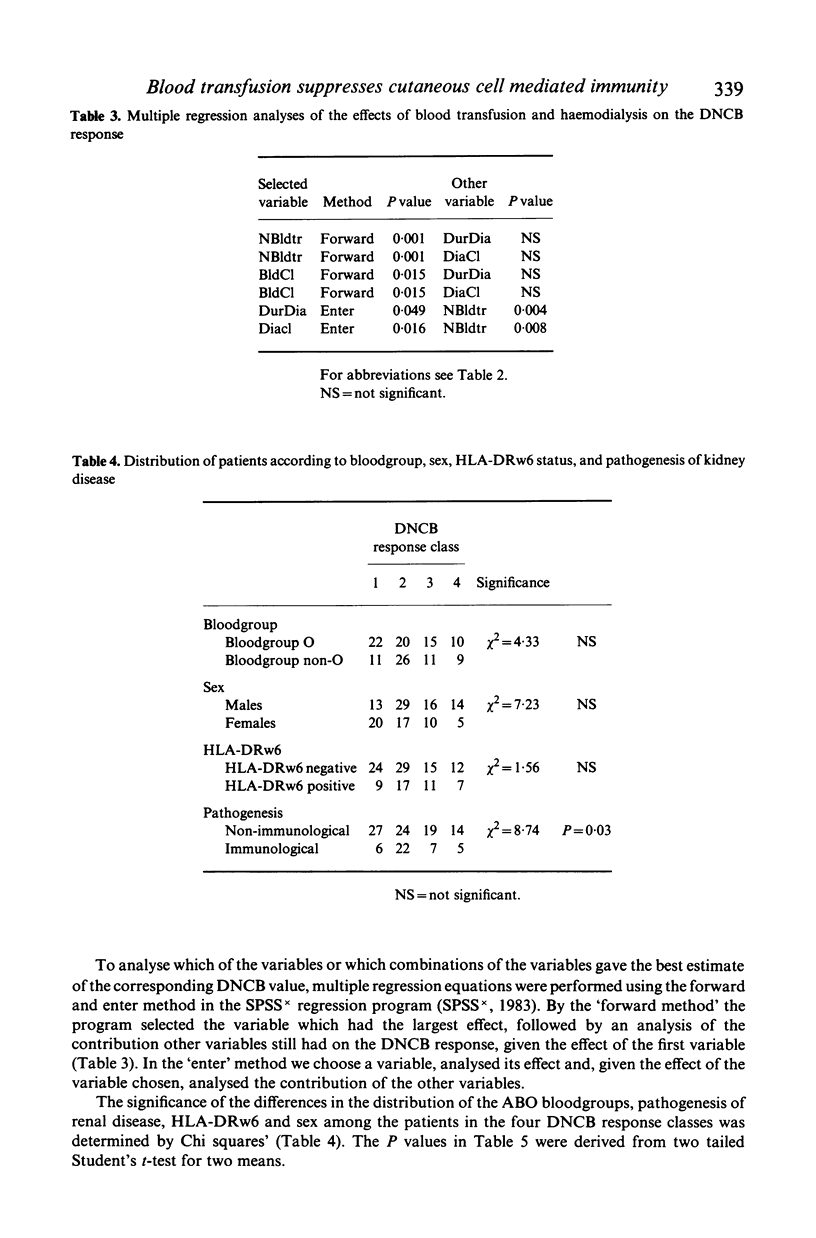
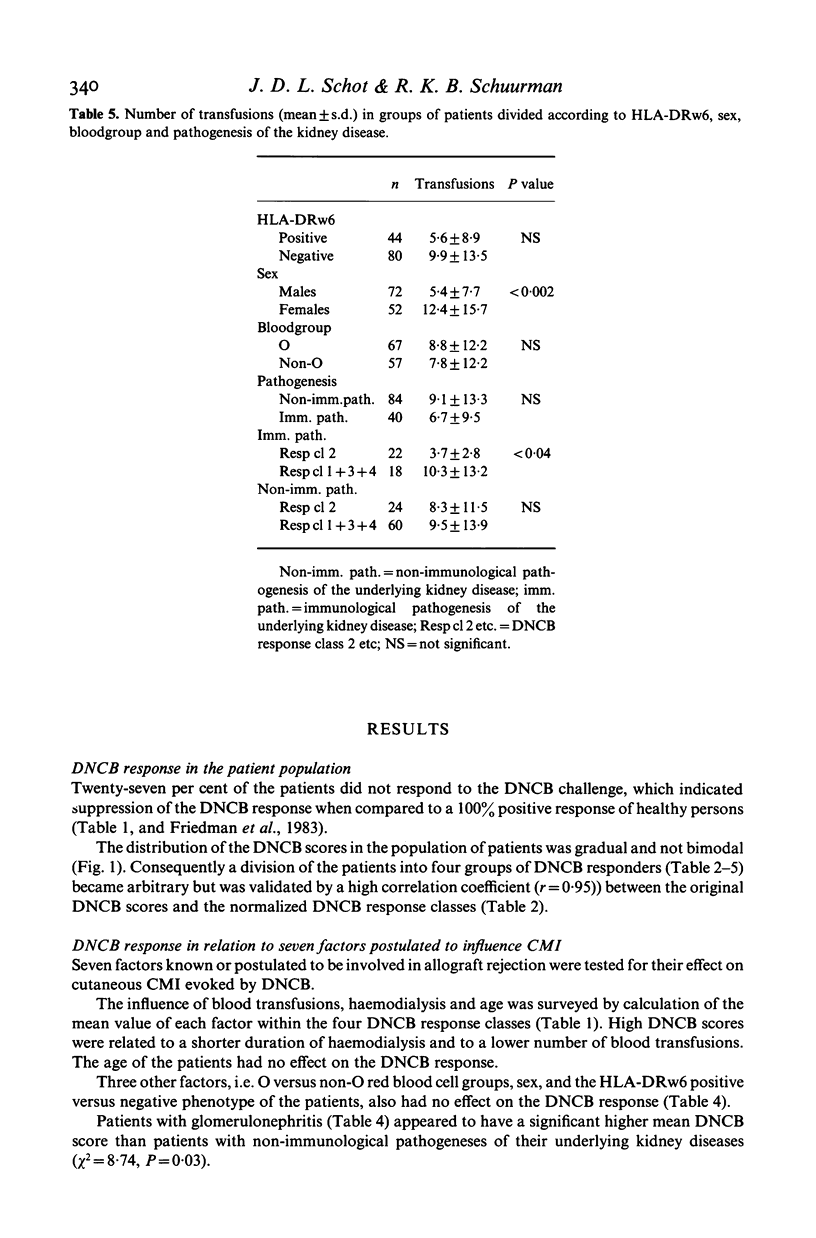
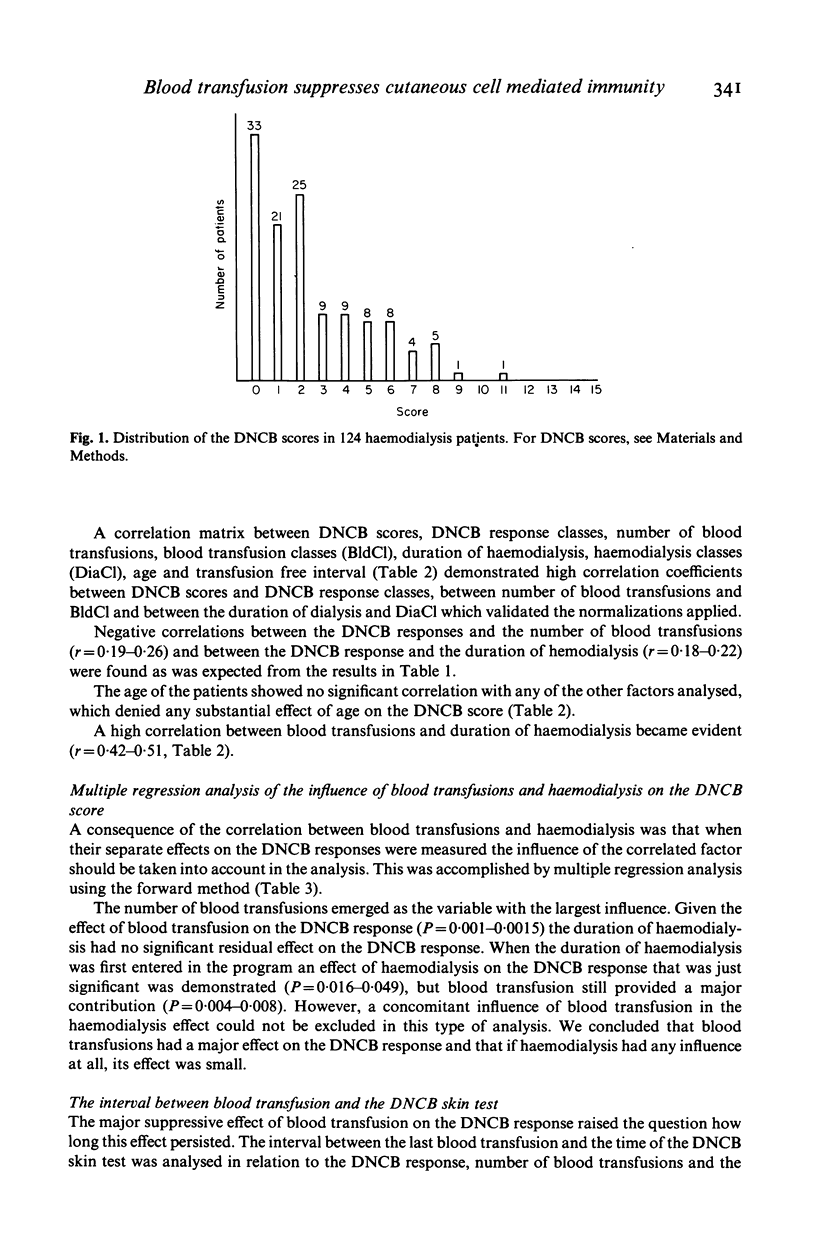
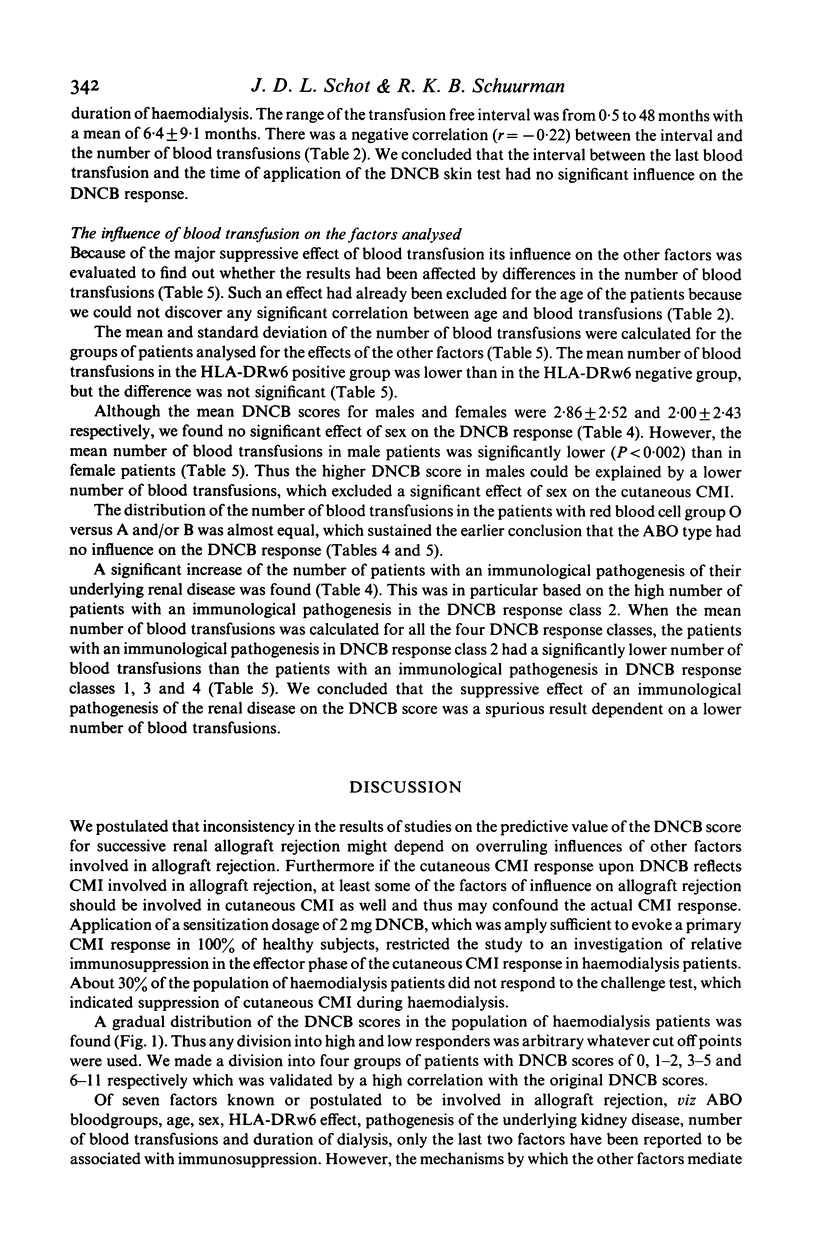
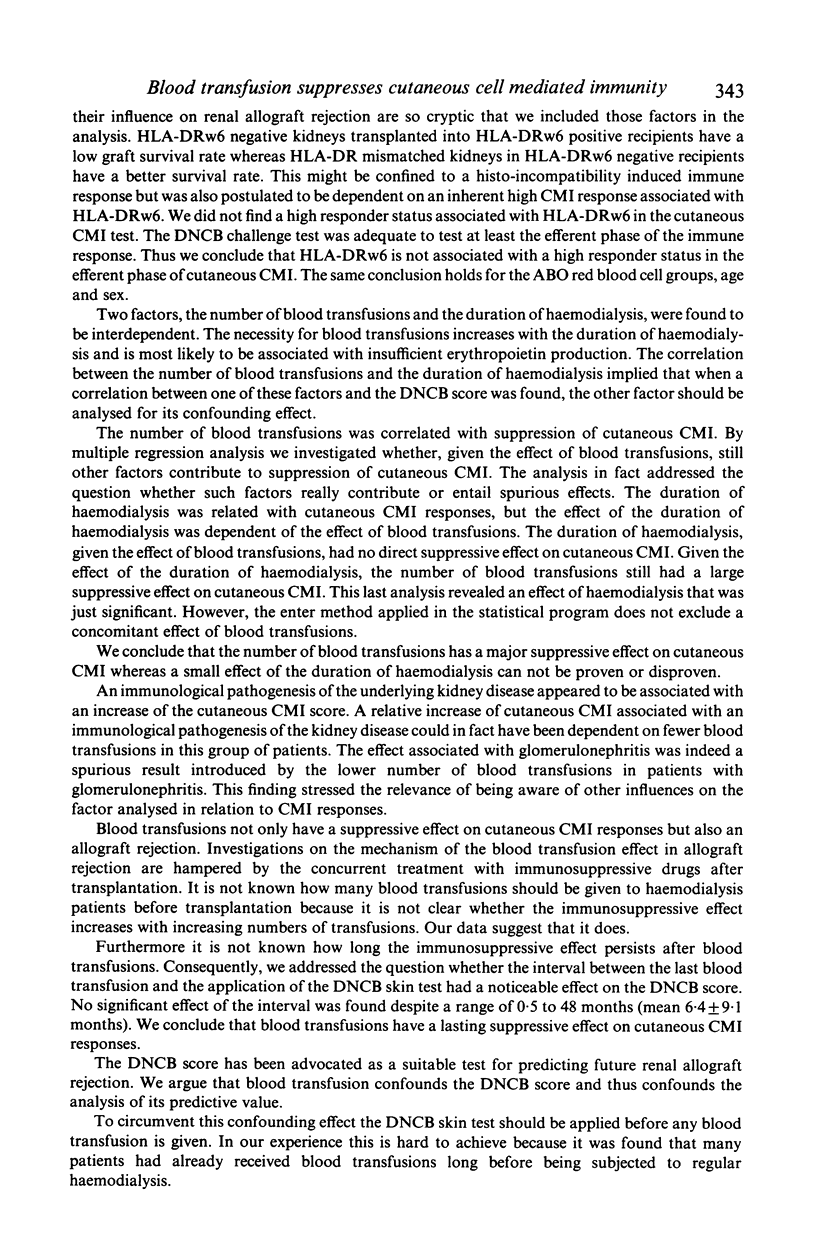
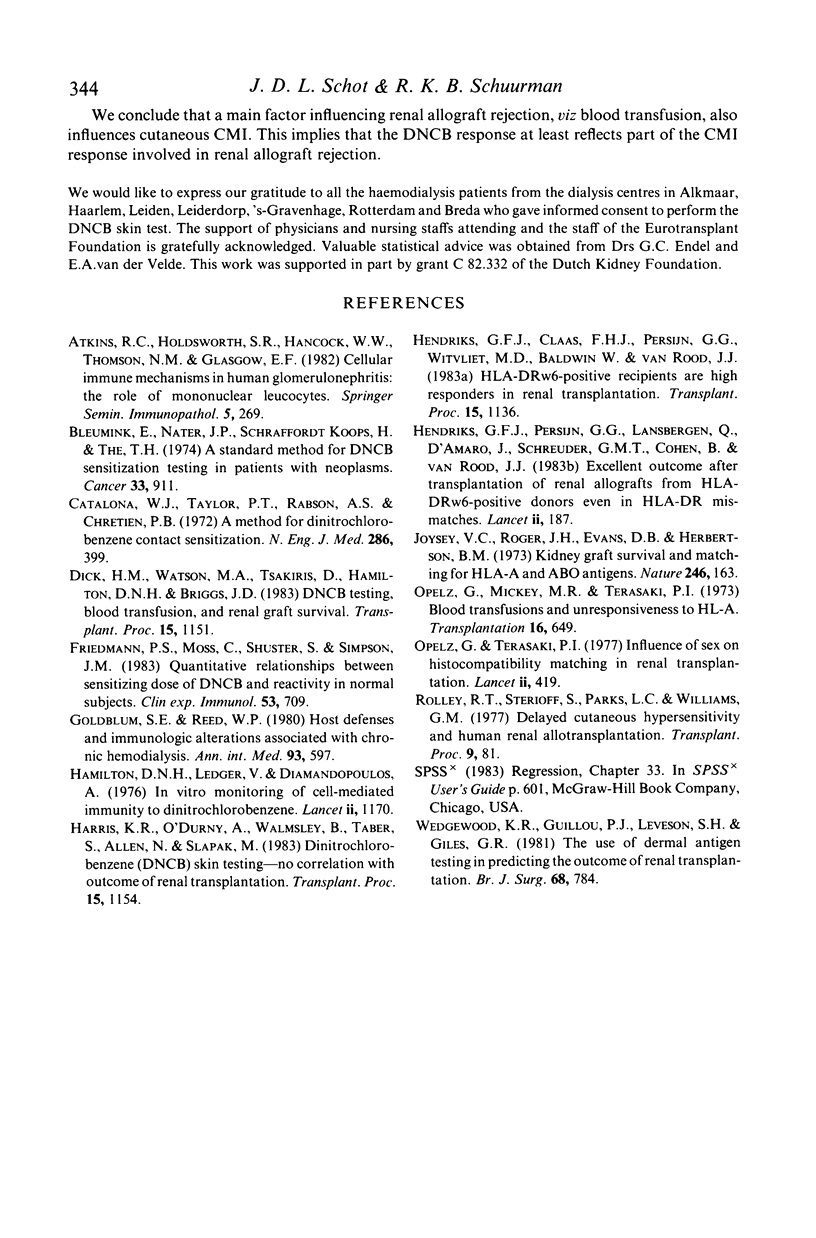
Selected References
These references are in PubMed. This may not be the complete list of references from this article.
- Atkins R. C., Holdsworth S. R., Hancock W. W., Thomson N. M., Glasgow E. F. Cellular immune mechanisms in human glomerulonephritis: the role of mononuclear leucocytes. Springer Semin Immunopathol. 1982;5(3):269–296. doi: 10.1007/BF01892089. [DOI] [PubMed] [Google Scholar]
- Catalona W. J., Taylor P. T., Rabson A. S., Chretien P. B. A method for dinitrochlorobenzene contact sensitization. A clinicopathological study. N Engl J Med. 1972 Feb 24;286(8):399–402. doi: 10.1056/NEJM197202242860804. [DOI] [PubMed] [Google Scholar]
- Friedmann P. S., Moss C., Shuster S., Simpson J. M. Quantitative relationships between sensitizing dose of DNCB and reactivity in normal subjects. Clin Exp Immunol. 1983 Sep;53(3):709–715. [PMC free article] [PubMed] [Google Scholar]
- Goldblum S. E., Reed W. P. Host defenses and immunologic alterations associated with chronic hemodialysis. Ann Intern Med. 1980 Oct;93(4):597–613. doi: 10.7326/0003-4819-93-4-597. [DOI] [PubMed] [Google Scholar]
- Hendriks G. F., D'Amaro J., Persijn G. G., Schreuder G. M., Lansbergen Q., Cohen B., van Rood J. J. Excellent outcome after transplantation of renal allografts from HLA-DRw6-positive donors even in HLA-DR mismatches. Lancet. 1983 Jul 23;2(8343):187–189. doi: 10.1016/s0140-6736(83)90172-1. [DOI] [PubMed] [Google Scholar]
- Joysey V. C., Roger J. H., Evans D. B., Herbertson B. M. Kidney graft survival and matching for HL-A and ABO antigens. Nature. 1973 Nov 16;246(5429):163–165. doi: 10.1038/246163a0. [DOI] [PubMed] [Google Scholar]
- Opelz G., Mickey M. R., Terasaki P. I. Blood transfusions and unresponsiveness to HL-A. Transplantation. 1973 Dec;16(6):649–654. doi: 10.1097/00007890-197312000-00017. [DOI] [PubMed] [Google Scholar]
- Opelz G., Terasaki P. I. Influence of sex on histocompatibility matching in renal transplantation. Lancet. 1977 Aug 27;2(8035):419–421. doi: 10.1016/s0140-6736(77)90606-7. [DOI] [PubMed] [Google Scholar]
- Rolley R. T., Sterioff S., Parks L. C., Williams G. M. Delayed cutaneous hypersensitivity and human renal allotransplantation. Transplant Proc. 1977 Mar;9(1):81–83. [PubMed] [Google Scholar]
- Wedgwood K. R., Guillou P. J., Leveson S. H., Giles G. R. The use of dermal antigen testing in predicting the outcome of renal transplantation. Br J Surg. 1981 Nov;68(11):784–788. doi: 10.1002/bjs.1800681110. [DOI] [PubMed] [Google Scholar]


